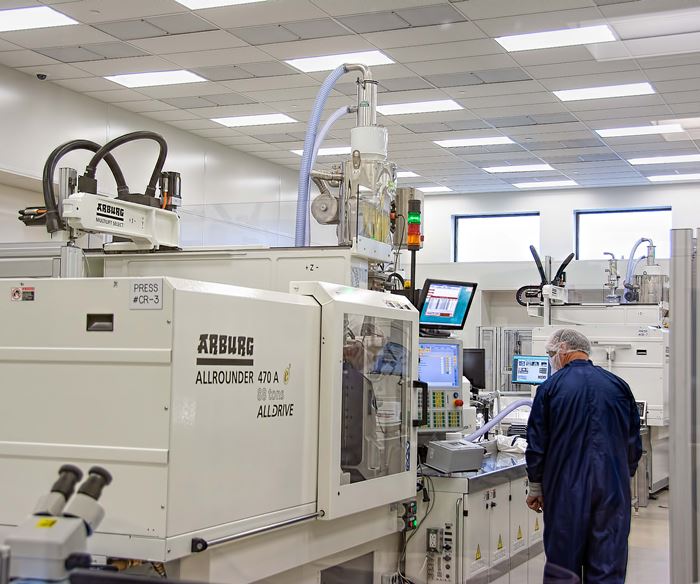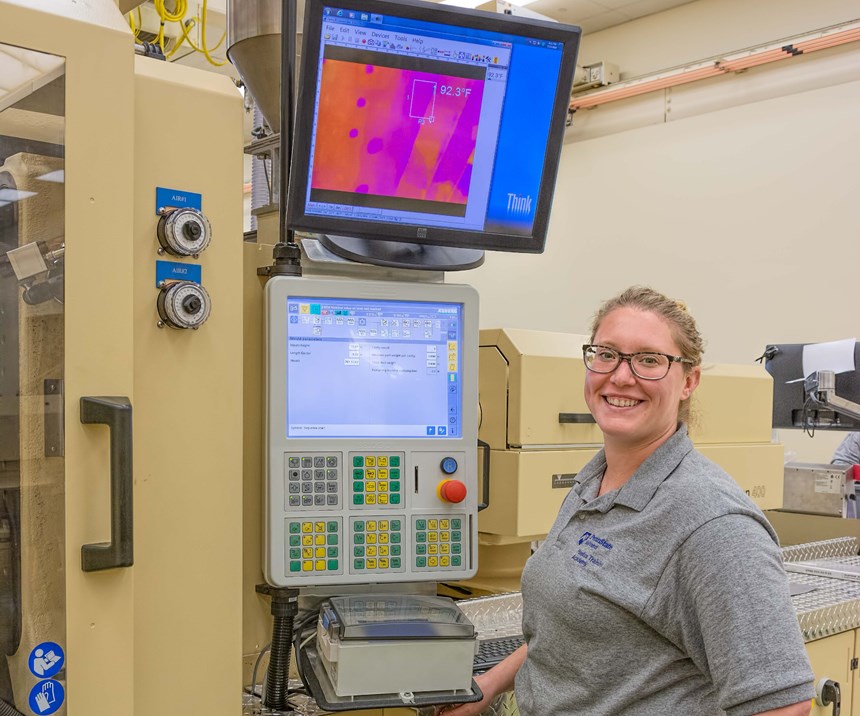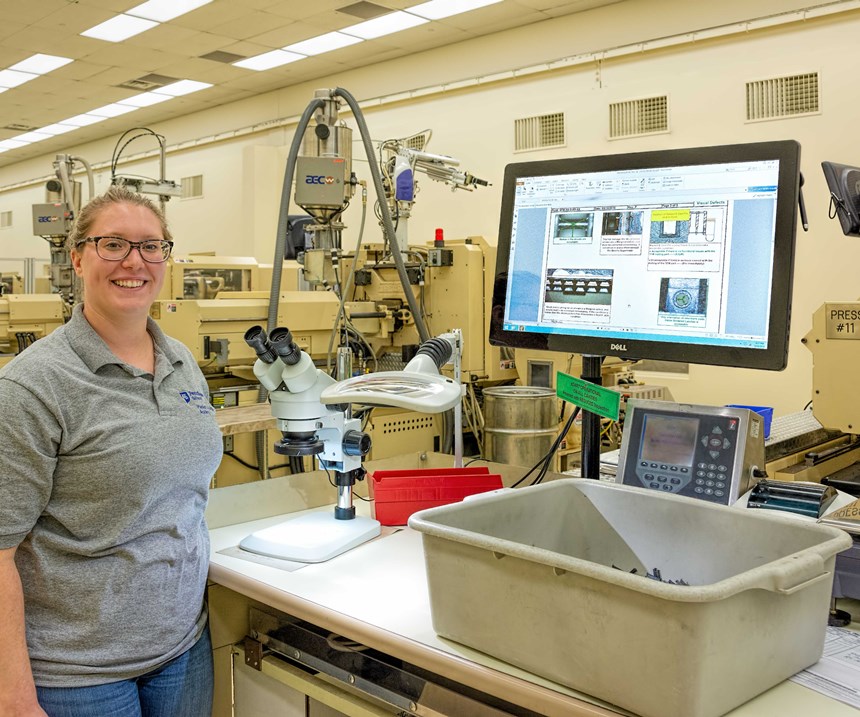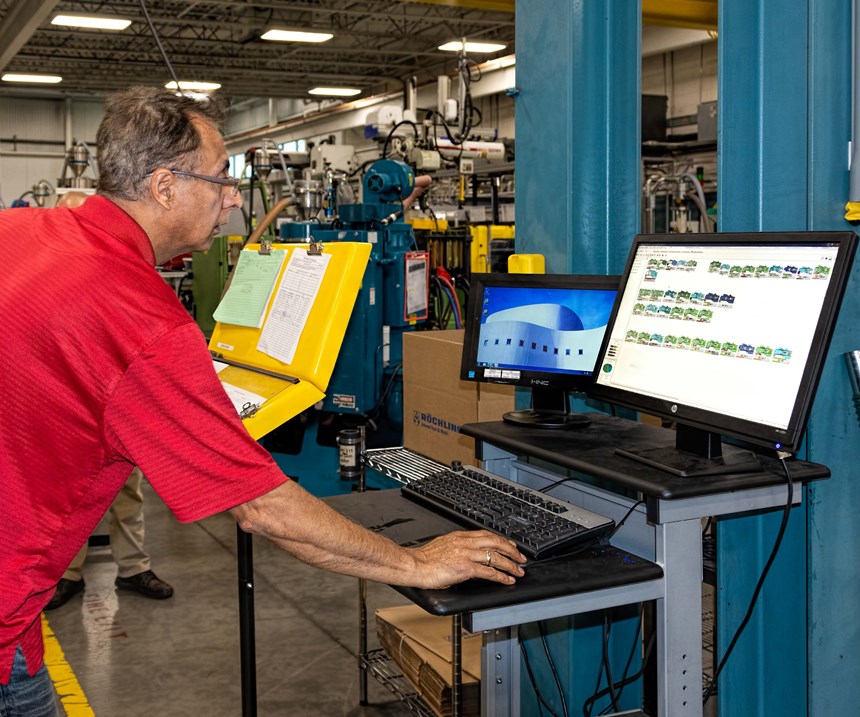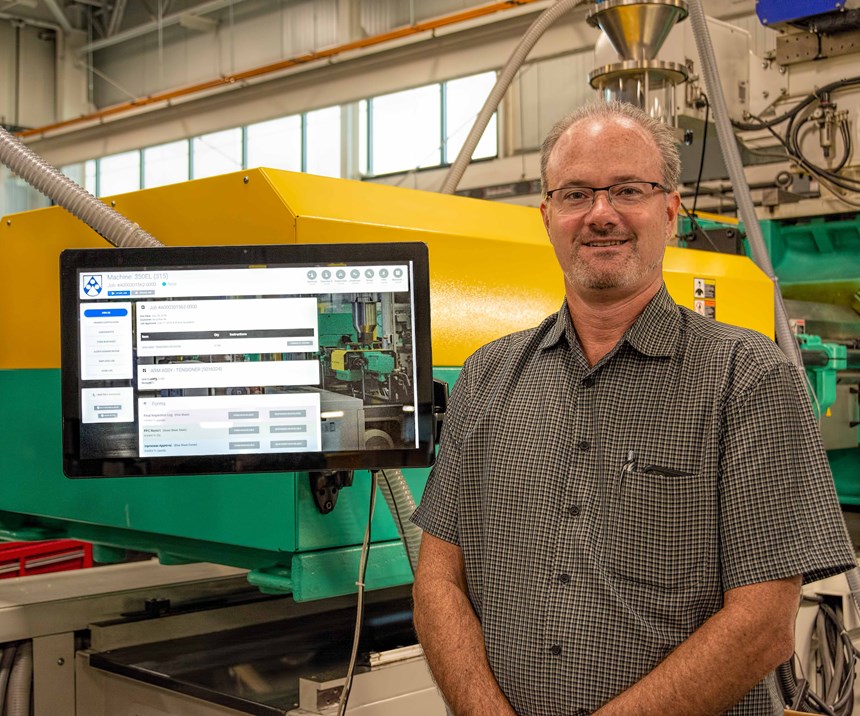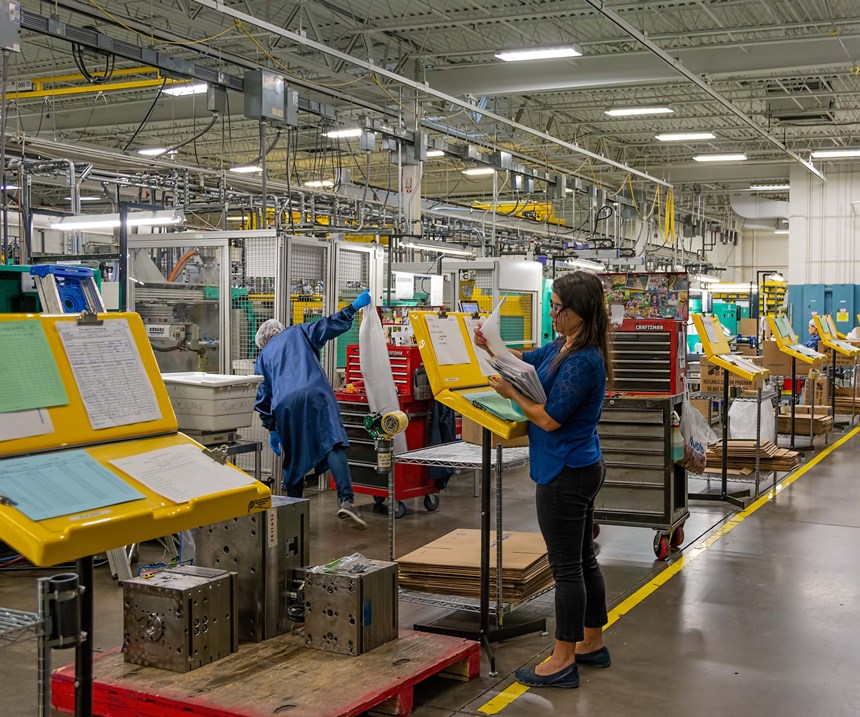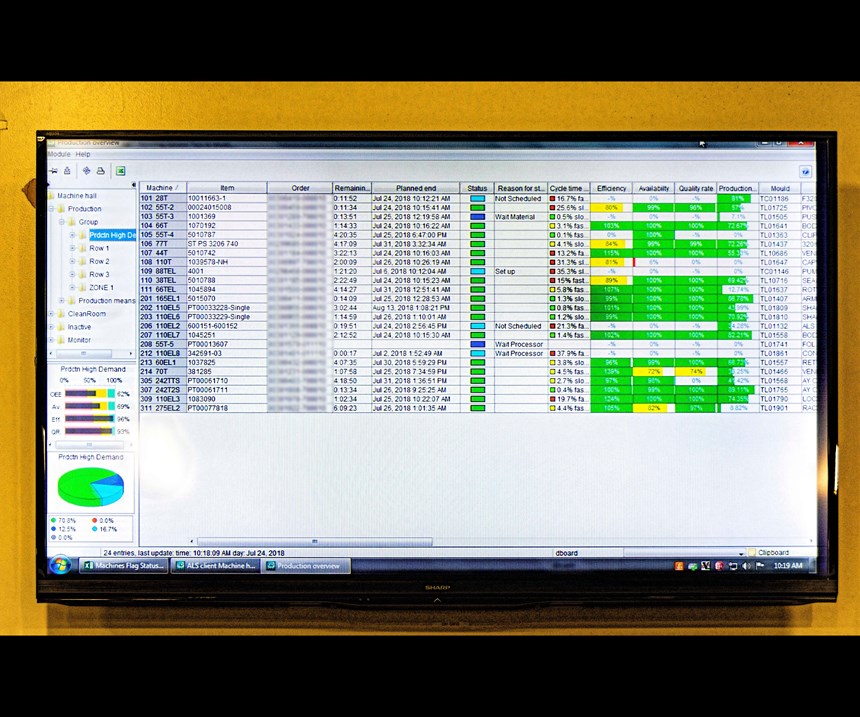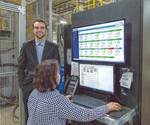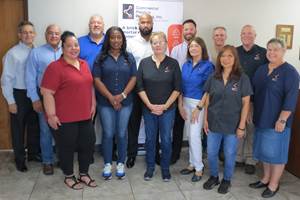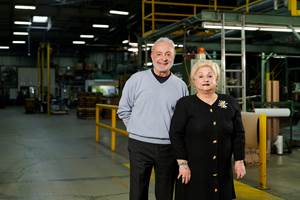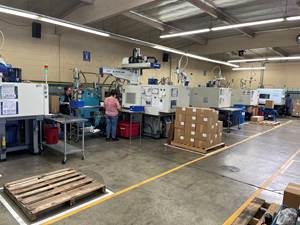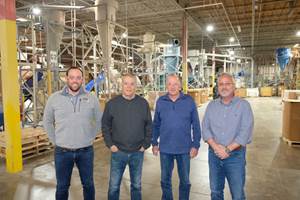While glowing predictions of an era of “smart factories” may strike some plastics processors as an imaginative exercise rather than a near-term reality, there’s no question that some pioneering firms are pursuing the avenue of “smart management” as their route toward Industry 4.0. This is particularly evident in quality-critical markets such as automotive (see April Close-Up) and medical. The latter was evident in a recent visit to two medical injection
molders in the Great Lakes region that are using information management as a strategic tool for improving quality, efficiency, and costs. Comparing their “4.0” implementations may be instructive both for the similarities and the differences.
How They Got Here
Plastikos Inc. in Erie, Pa., and Roechling Medical Rochester in Rochester, N.Y., both had their origins in moldmaking: Micro Mold was established in Erie in 1978 and launched Plastikos in 1989 to get into molding. Meanwhile, Advent Tool & Mold started up in Rochester in 1978 and branched out into molding in the following decade. It was purchased in 2012 by Roechling Group, a German firm with global operations in industrial, automotive, and medical plastics processing.
Both operations decided to emphasize medical molding in the past 10 years. Plastikos started out molding electrical connectors, but made a serious push in medical starting around 2009, accelerated by installation of an ISO 7 (Class 10,000) clean room with eight all-electric presses in 2015. Today it retains the connector business but its revenues are 30-40% from medical devices for drug delivery, surgical eye care, fluid dispensing and orthopedics, among others. It has a 77,000 ft2 plant with 160 employees and 35 injection presses from 88 to 220 tons. All are Arburgs, except four from Sumitomo (SHI) Demag. Thirty-four machines are all-electric.
Plastikos is building a new 33,000 ft2 medical plant nearby that will add 10 machines, with 10 more planned to follow in a second phase. At full capacity, the new facility will more than double the company’s current clean-room molding area. Combined revenues with Micro Mold are above $33 million, says Rob Cooney, manufacturing manager.
The molding business at what is now Roechling Medical Rochester was mainly automotive and business equipment until 2006, when it began to focus on medical. When acquired by Roechling, the medical share of its business was 60% and is now over 90%, according to Joe Lenhardt, v.p. of operations. It produces surgical, diagnostic and laboratory devices. Cleanroom molding and assembly occupy 6500 ft2. Part of the $2 billion+ Roechling Group with 90 locations in 23 countries, the Rochester medical plant occupies 80,000 ft2 (plus a 30,000 ft2 warehouse/distribution center nearby) with 260 employees and 52 injection machines from 28 to 550 tons. Upwards of 90% of those presses are Allrounders from Arburg, accompanied by some Toshiba and Engel presses. The company has some hydraulic machines—mainly two-shot presses—but has bought almost entirely all-electrics since 2003.
MES Hub for Data Exchange
Medical molding requires extensive record keeping and strict adherence to qualified processes. So it’s logical that both of these molders began their journey to Industry 4.0 with MES (manufacturing execution system) computers. And, because they are predominantly Arburg shops, they chose the Arburg ALS host-computer system as their information hub.
Danielle Bentley, a Plastikos process engineer and medical molding manager, says the ALS came to that firm in 2013 with a package of 10 selected data screens (the choices have changed over time). The most-used display is the machine overview, which shows the press layout on the shop floor, with each press colored green if running or blue if down for maintenance or setup. This screen can show each machine’s OEE (overall equipment effectiveness). At Plastikos’ sister company, Micro Mold, two molding machines used for mold development are also tied into the same ALS network so that process refinements can be transferred easily to Plastikos when production begins.
“Within the maintenance module, pre-warnings proactively alert technicians when machines are coming due for required maintenance. Production planning is also notified so that we can decide when it is appropriate to take the machine down for maintenance,” explains Bentley.
The four Sumitomo presses are also tied into ALS, which can display machine status.
Meanwhile, at Roechling, Lenhardt says, “According to Arburg, we are their largest ALS installation outside of Germany, in both number of machines and number of software modules used.” He describes the “core” of the system as production and process monitoring: “We can see at a glance what’s running and get OEE for the entire shop or groups of machines, or even individual machines.” As at Plastikos, another core function is loading a qualified process from the ALS server to the molding machine. Roechling can do the same for its small number of Arburg robots, and potentially could do that for a range of auxiliaries—dryers, chillers, etc.—that Arburg offers under private label, Lenhardt says.
Roechling also uses the ALS maintenance module to schedule P.M. for presses, robots, dryers, etc.—even for plant utilities such as the rooftop air conditioner and central water system. The maintenance module automatically generates P.M. work orders based on operating time—except for molds, which are scheduled for maintenance based on number of cycles run.
Roechling’s ALS server is connected to its Infor SyteLine ERP system, so that SyteLine “pushes out” the production schedule to ALS, and from there to each press. “In the past, we just had a master schedule for the whole plant,” says Lenhardt.
In turn, the ALS tells the ERP system to reserve time for machine maintenance when formulating production schedules. Echoing Plastikos’s pre-ALS experience, Lenhardt recalls, “Before, we had separate P.M. software that was monitored by the maintenance manager. He would say, ‘I’ll need this press today,’ which caused conflicts with production.”
The maintenance module fills in a record-keeping gap that plagues many molding shops: It logs every maintenance work order, notes when it is completed, allows maintenance personnel to add notes, and also records unanticipated maintenance. Lenhardt cites an example, “If the maintenance records show us that we had to replace a switch three times in the past year, we would start to wonder if we were getting defective switches.”
Roechling also uses Engel’s e-factory MES system for its handful of Engel presses. This is connected to the Arburg ALS so the ALS can send setup programs to e-factory and from there to the Engel machines. Roechling has no comparable capability for its few Toshiba presses.
Both Plastikos and Roechling have monitors strategically located throughout their plants to access and log both production and process data.
At Roechling, the Arburg Selogica machine controller offers visibility to all “the nuts and bolts of the process,” as Lenhardt puts it; only selected data are sent to the ALS, based on a standard list of parameters used for all machines.
All Roechling administrators can access ALS on their PCs. The production manager can access it on his phone and receives automatic text alerts or emails if a press goes down unexpectedly. And, as at Plastikos, Roechling is installing new shared computer kiosks with ALS access for all machines. These kiosks also allow manual data input. As Lenhardt describes it, the ALS documentation module available at each kiosk ties each production job to a file folder that includes workcell setup diagrams and settings for auxiliary equipment (which must be set up manually at present).
In addition, Roechling has one large, 90-in. display on a wall in the molding shop, which displays the status of all machines, with an indicator that starts flashing if any press wanders outside its process limits.
Both firms are pushing to go “paperless” for better process control and traceability. At Plastikos, this is accomplished through having critical setup parameters and process optimization records accessible directly at each machine. Roechling accomplishes this with the new kiosk displays, where it is now implementing electronic work instructions—setup, operating, and quality-inspection instructions, along with photos and videos. “This makes more information directly available at a single point to the people doing the work,” explains Lenhardt.
The Payoffs
Plastikos and Roechling agree on one of the benefits of plantwide data exchange: “The key advantage is in program administration,” says Lenhardt. “We can load a qualified process from the ALS server to the machine. It saves time and reduces the risk of manual transfer or using a USB stick.”
Agrees Bentley, “It’s much better than setup by hand from a printed list. You can be sure you’re not missing anything, like setting the production sequence, robot program, clamp tonnage, ejector settings, etc. These aren’t typically controlled using a traditional process sheet but they can sometimes be extremely critical, depending on the part and mold. All of this translates into increased efficiency, quality and uptime.”
Both firms agreed on the efficiency benefits of coordinating preventive-maintenance scheduling and production scheduling. And both agree on the value of “going paperless.” Says Lenhardt, “First, I don’t like to see paper clutter at work stations. Second, electronic data improves revision control, which is a large task with hard copy. Record keeping, training records—they all become more reliable and accessible in electronic form. And in our business, there is a multiplicity of forms for jobs, purchase orders, and so forth—all are audited by our medical customers. Paper forms are one of the more difficult things to maintain; but with electronic information, everything is updated automatically. And you can still print it if you want to.”
Lenhardt continues: “Roechling is very focused on Industry 4.0—digitalization and leveraging technology to coordinate the manufacturing process. Electronic information helps us gain insight into efficiency and what’s happening on the factory floor—automatically.
“All data is stored in real time. We can go back in time and look at process parameters, see how many production interruptions occurred and on which shifts. It’s good for root-cause analysis. We didn’t have that before the ALS—just hand-written records and human memory. The machine control stored only the last 1000 shots, but ALS allows us to view a much longer time scale. Everything from the machines goes into the server and is automatically backed up.”
Production data has its value too: “Automatic recording of production quantities alerts personnel when a job is done. In the past we might have run two extra shifts worth of product because we had to rely on technicians to set and monitor the job counter. And ALS keeps track of shots that fall outside of spec limits. It knows the mold cavitation, so it tracks the number of good parts made toward the order quantity. In the old days, we might have shut down after thinking we had finished a job and discovered we were short because of failing to account for rejects.”
Lenhardt adds, “OEE data from ALS is a key metric for us. We use it each month for management reviews. We don’t use it for a snapshot of operating performance, but to keep track of it over time.” One element of OEE data is particularly important to Roechling: “Our quality is typically 100%, and our cycle-time efficiency is typically very high. So machine uptime availability is most important to us, especially for machines producing high-demand products. We break down availability tracking into groups of machines; because older presses have lower availability, we group them together. OEE tracking helps us spot issues, like why is this machine under-utilized? If others are over-capacity, can we cross-qualify? Or is that unit near the end of its useful life?”
Lenhardt’s ultimate goal is to automate data acquisition from his mold shop, transferring data from CNC mills, EDM machines, etc. to ALS. He says viewing which machines are running or in setup, as well as runtime data, would jump-start continuous improvement of machine utilization.
Bentley at Plastikos notes the value of integrating different sources of process and production data. Her shop currently has plans to integrate multiple systems into one.
The two firms have experience with one other aspect of Industry 4.0, which is often referred to as “smart services.” Recalls Lenhardt, “Remote troubleshooting by Arburg was very useful in integration of the ALS system.” Bentley notes that Plastikos has used Arburg’s remote troubleshooting for help in robot programming and ALS questions.
Related Content
Inside the Florida Recycler Taking on NPE’s 100% Scrap Reuse Goal
Hundreds of tons of demonstration products will be created this week. Commercial Plastics Recycling is striving to recycle ALL of it.
Read MoreGeneration Gap? Not at Packaging Personified
Started at a kitchen table and now in its third-generation of family involvement, this vertically integrated supplier of flexible packaging traces its success to closely aligning with customers and continually investing in new technology across its films, printing and converting operations.
Read MoreBack in the Family Business
In its 45th year, Precision Molded Plastics has carved out a technology and market niche, growing not just when opportunities arise but when they make sense, after its leader changed careers to keep the family business from changing hands.
Read MoreEvolving Opportunities for Ambitious Plastics Recycler
St. Joseph Plastics grew from a simple grinding operation and now pursues growing markets in recycled PP, food-grade recycled materials, and customized post-industrial and post-consumer compounds.
Read MoreRead Next
Paperless ‘Smart Factory’ Based on Automated Production Monitoring
Tier 1 automotive molder’s home-built production-monitoring and ERP systems, designed for “the little guy,” boost its efficiency rating and profits.
Read MoreMaking the Circular Economy a Reality
Driven by brand owner demands and new worldwide legislation, the entire supply chain is working toward the shift to circularity, with some evidence the circular economy has already begun.
Read MoreBeyond Prototypes: 8 Ways the Plastics Industry Is Using 3D Printing
Plastics processors are finding applications for 3D printing around the plant and across the supply chain. Here are 8 examples to look for at NPE2024.
Read More


